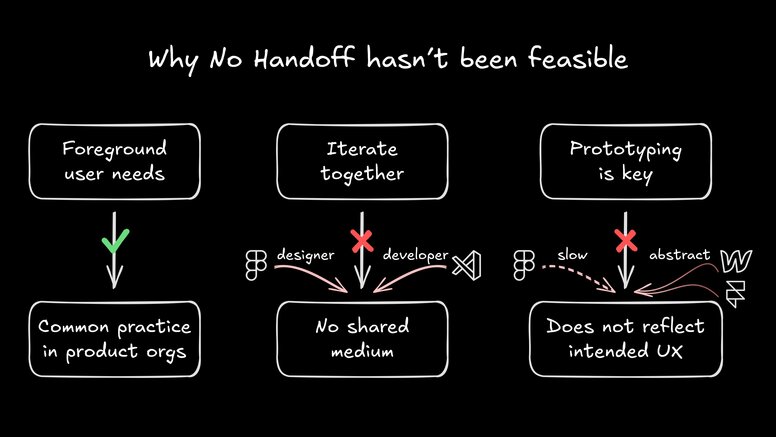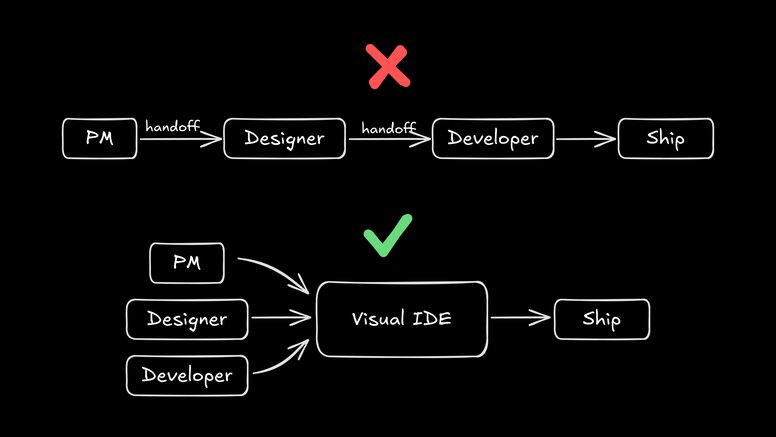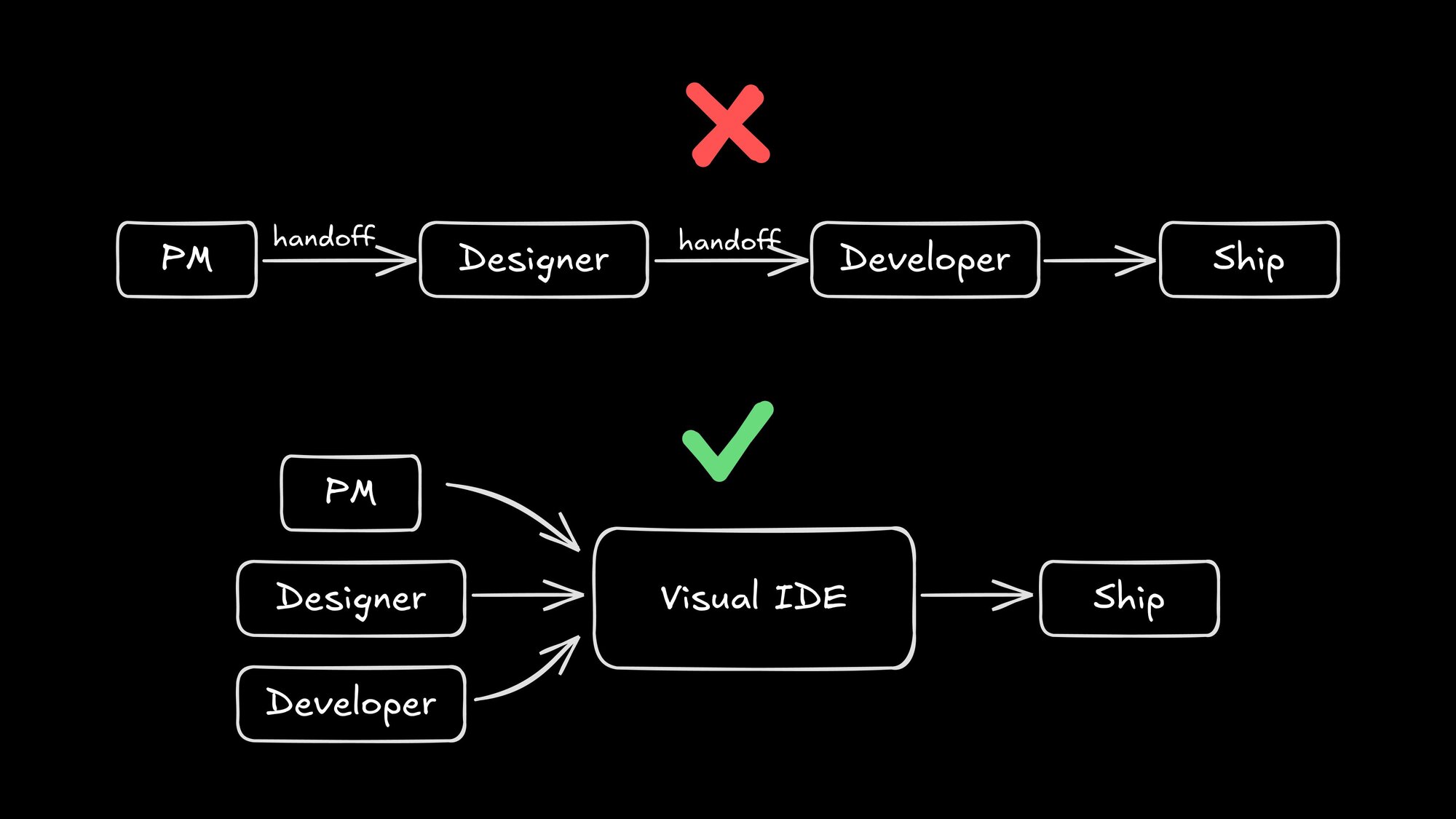design to code
The No Handoff Methodology: A Practical Playbook for UX Design Leaders
- 83% of designers report design-development divergence at least sometimes; 26% say it happens on every project (source)
- 66% of teams waste 25-50% of their time on design-delivery inefficiencies (source)
- 63% of teams say features slip to later sprints due to bottlenecks in design-to-code (source)
- 73% of designers say design delivery inefficiencies decrease team morale (source)
- 8-16 hours of engineering time are spent manually coding each Figma screen (source)
The No Handoff methodology isn’t new, it’s newly possible
Roughly three years ago, UX strategist Shamsi Brinn, introduced the perfect solution to the problem of messy handoffs between design and dev in her blog entitled, “No Handoff: close the gap between product and engineering”. As Brinn put it: "Figma produces an intermediate product that requires translation to become a website or app. The effort that designers pour into Figma is ultimately throwaway work, and unnecessary handoffs are not an efficient use of our time."
The solution Brinn suggested? "The working prototype is the living spec of the project and a shared language for the team. No more translation is needed because everyone understands a prototype."
Instead of treating the symptoms of handoffs, she proposed treating the disease with a new agile working pattern she entitled “No Handoff”. Her three principles for No Handoff are:
- Foreground user needs as our northstar
- Iterate together
- Prototyping is key
Why No Handoff hasn’t been feasible

The AI breakthrough that’s made No Handoff feasible
2024 marked a seismic shift. AI-powered coding solutions like Cursor, Lovable, and our own offering, Fusion, didn't just improve the handoff, they empowered designers to eliminate the handoff entirely. These vibe coding solutions enabled:
- Designers to create designs in code that developers can actually use in production
- Prototypes to become production foundations, not throwaway artifacts
- Iterations to happen in real-time on the same medium: code
AI coding solutions are bringing together designers and developers to collaborate in a way they never could before. As one engineering leader recently put it: "Our source of truth needs to be our codebase. If designers can work in a tool they're good at and developers work in a tool they're good at, and they’re both working on the same thing, that's when real collaboration happens. It's a handshake, not a handoff."
Treat the disease, not the symptoms with the No Handoff methodology

What No Handoff looks like when AI enables designers and developers to iterate together on prototypes that use production-ready code
Here's the impact:
The people, processes, and technology to have success with a No Handoff pilot in your organization
People: Start with AI-optimistic tech-savvy designers and collaborative developers
- Actively experiments with AI design tools (Figma AI, Midjourney, Claude, etc.) in their workflow
- Speaks excitedly about AI's potential to enhance creativity rather than replace designers
- Already shares AI-generated concepts or prototypes proactively
- Designs with responsive design best practices such as auto-layout in Figma
- Comfortable with design systems, tokens, and component libraries
- Understands basic front-end concepts (HTML/CSS structure, responsive design principles)
- Actively uses AI coding assistants (GitHub Copilot, Cursor, Claude, etc.) in their daily workflow
- Speaks positively about how AI improves their productivity and code quality
- Proactively shares AI-assisted solutions or workflows with the team
- Actively participates in design reviews and provides constructive technical feedback
- Communicates technical constraints and possibilities clearly to designers
- Consistently leverages the design system and component library
Processes: Start designing and prototyping in production-ready code without ditching what’s working
Start doing
- Designing and prototyping in production-ready code
- Measuring time-to-market from idea to production
- Working in git-based workflows for code commits and review
- Getting consistent customer and end user feedback
- Leveraging your design system and component library
- Using Figma for brand new patterns or very complex creative designs
- Wiring up giant Figma noodle prototypes
- Writing complex docs describing design and code specs


























